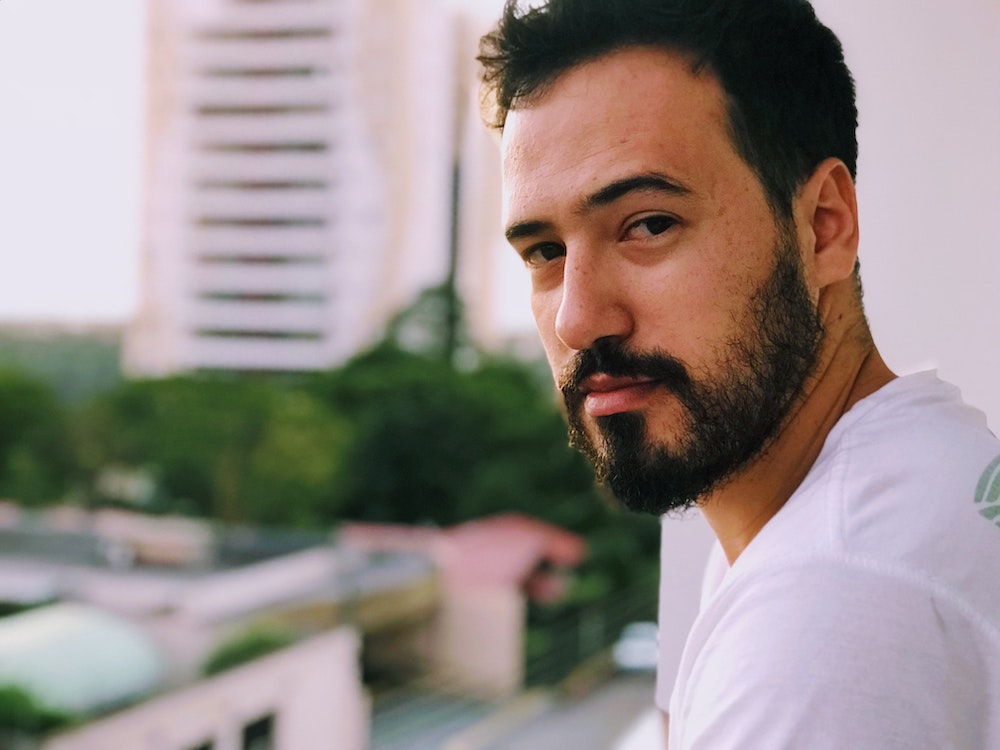Heal PTSD & trauma. Permanently.
 Something bad happened, and now your life isn’t the same.
Something bad happened, and now your life isn’t the same.
It’s a normal day; you’re just going about your own business when suddenly you get a shock of Adrenalin. Something reminded you of the bad thing, and your body is telling you to be on high alert. You feel deep, wordless fear even though people around you are just fine.
If you’re like the millions of Americans struggling with PTSD or trauma, this can happen anywhere at any time. Other times you know exactly when it’s likely to pop up – like at a fireworks show, walking alone late at night, or driving in traffic.
Either way, it is making your life miserable.
I can help you heal. For good.
What things do you avoid because of this?
Do you avoid doing things you would really like to or need to do because the risk of sudden terror is too great? Do you wonder if someone you’re with, a family member, friend or colleague, will see this happen and think less of you?
You want to spend your time and energy on things that are important to you, not on feeling terrified and trying to calm yourself.
There’s good news.
The brain has an amazing ability to heal itself if you give it the right treatment.
There is hope.
EMDR is a kind of therapy that uses the brains own healing mechanisms to process through the bad stuff and help you get back to normal. It’s been proven by high quality research to be effective and a faster way to heal from these issues than other kinds of therapy.
Whereas other kinds of therapy help you learn to cope with the symptoms, this therapy helps you heal your PTSD or trauma so that there are no more symptoms.
 What makes EMDR different?
What makes EMDR different?
My mentor likes to joke that he is a recovering talk-therapy clinician.
The thing that sets EMDR apart from traditional talk therapy is that the main part of the therapy happens without talking about the bad stuff very much at all.
I’ll direct you to notice the thoughts, feelings, memories, and bodily sensations that come up after we identify what has been bothering you. You can choose to talk about them, but, honestly, it works faster if you just let your mind go where it wants to go.
With trauma resulting from one incident, like a car accident, sexual assault, or exposure to violence significant progress can be made in a handful of sessions.
Yes, I am serious.
Sometimes all it takes is 3-6 sessions and you are literally free from all the things that have been robbing you of your enjoyment of life.
That is why EMDR is recommended as a treatment for PTSD and trauma by:
The American Psychiatric Association
The World Health Organization
The Department of Defense
If your issues come from something that happened over a prolonged period of time, say time spent living exposed to violence, abuse in your childhood, or battling cancer, it tends to take longer.
If you’re curious how long it might take you, I offer free phone consultations where I might be able to give you a ballpark timeline.
Examples might be 2-6 months for returning soldiers or those who experienced a life-threatening illness that required long-term treatment. It might be more like 1-2 years for people who experienced a great amount of abuse or neglect in their childhoods or grew up exposed to violence.
Yes, a few years is a long time to be in treatment, but here’s the low down. All of my colleagues who have been in practice for 20+ years and used to do traditional talk therapy and now do EMDR have all said the same thing:
EMDR treats trauma in a fraction of the time that traditional talk therapy did.
This is actually what I did my Master’s thesis on. I interviewed EMDR clinicians who treat complex trauma. Complex trauma includes things like child abuse, people who were involved in abusive relationships, people who grew up in damaging cults, or grew up exposed to violence or war.
I consistently got reports that complex trauma that took 5+ years of weekly traditional therapy to treat was being treated in 2 years with EMDR. That single incident used to take 6 months of traditional talk therapy but now takes 6 sessions of EMDR.
 Doing EMDR therapy
Doing EMDR therapy
I’m not going to sugar coat it. The ‘active’ part of EMDR therapy, the part where you are working through your fears, is not fun. It’s kind of what you’d expect working through your deepest fears to feel like. That’s why a huge part of this kind of therapy is teaching you how to calm yourself down.
When I’m providing EMDR therapy, I make sure we have enough time to really help you get out of that heavy emotional headspace before our session is done. This can be as easy and simple as doing a breathing exercise or watching funny YouTube videos. It can be a more involved mental exercise, doing yoga poses or a progressive body relaxation exercise.
Different things work for different people, so I give you several options – and you pick the one that feels best for you.
Then we check-in on how things have been for you between sessions.
Every session forward, I check in on how you feel during the week. If you feel brought down or had an unpleasant reaction, I adjust our sessions, so they’re not so intense. I explore if a different calming exercise might work better for you, and I give us extra time to calm down at the end of a session.
If you ever feel overwhelmed, let me know; and I will immediately start using techniques to calm you down.
Though, a huge part of my EMDR training and research for my Thesis included watching for signs that a person is getting overwhelmed. So even if you can’t verbalize it, there’s a good chance I’ll catch on and slow things down.
This process desensitizes the things that have been bothering you. It may take weeks or months but over time you stop having big responses to little things.
The flashbacks, full-body fear response, nightmares. All gone.
After that we help you reprocess your thoughts and beliefs about your past. For example a police officer who saw their partner get shot might think and believe on a deep and visceral level, “It was my fault, I should have known that would happen.” Together we look at the situation through a new lens, one not distorted by those pesky trauma reactions that we just desensitized. We would go over the situation and explore if there was anything more that could have been done, or a way to have known how the situation would turn out.
Spoiler alert, there isn’t a way they could have known or anything they could have done to change the outcome. And with the trauma responses desensitized, you can actually believe it.
You’re just free to live your life.
I chose to use EMDR for my own PTSD.
 I was rear-ended in traffic
I was rear-ended in traffic
I was 19, and I remember the night it happened. It was red all around me from the break lights that evening. When suddenly there was an accident right in front of me. I didn’t think I could stop in time and braced myself for impact, but amazingly, I stopped before I hit the car in front of me.
I exhaled, so relieved to have narrowly avoided catastrophe – but then I was hit from behind. I had to go to the ER to be treated for whiplash and soft tissue damage (my muscles got all beat up). My car was able to be repaired – but was never really the same again.
But in the grand scheme of things, it wasn’t so bad. The doctor gave me muscle relaxers and Tylenol – and told me to take it easy. I dealt with insurance, and life went on normally.
Driving in traffic made me tense
And we live in Southern California –there is always going to be traffic.
As the weeks and months went on, I noticed myself, for lack of a better word, freaking out when someone changed into a lane right next to me. I was scared they wouldn’t stop coming over and would hit me.
I’d have a full body reaction – my heart would beat like I’d been running, I felt pure panic, and my whole body would tense up. I felt frozen with fear. I’d keep driving with white knuckles.
Then I noticed that when I was driving in traffic, I’d generally be tense even if nobody merged next to me. And it feels so silly to say, but I would see, in my mind’s eye, myself getting into a car accident with a huge Michael Bay-inspired explosion. I knew that wasn’t what really happened in car accidents, but I kept imagining a car hitting me, us veering into the center divider, and exploding in a huge fiery ball of death.
I’d never really enjoyed driving, but it became a huge burden knowing that every time I’d get in the car, I would get frozen with fear and see explosions.
My neck and shoulders hurt all the time.
My whiplash led me to go to psychical therapy twice a week for 6 months. But at the 6-month mark, I was told that there was no structural or physical reason for my pain, that it was psychosomatic – otherwise known as “all in my head” – and there was nothing more they could do for me.
The next school year instead of commuting from my family’s house 45 minutes away, I ended up getting an apartment walking distance from school. I gave my car to my brother, justifying that I couldn’t afford an apartment and a car at the same time as a broke college student.
But what kind of native Southern Californian willingly gives up their car?
I was absolutely elated that it took me 10 minutes to walk to school. No more paralyzing fear for 45 minutes every morning to start off my day. Just some extra exercise. It felt amazing. Like I had my life back.
Every other weekend or so, I’d go home for the weekend and take back possession of my car, usually to go see nearby friends. I’d forget until I got in the driver’s seat how completely horrible the experience of driving had become for me.
 I finally got help
I finally got help
It was almost two years after the accident that I brought myself in to see a therapist. I tearfully told him about being frozen in fear and seeing explosions. That I knew it was irrational.
Here is where you probably expect me to tell you how this therapist changed my life; that they helped me work through my fears and get back to driving. But that’s not what happened.
The therapist literally told me not to think about it and to tell myself that I had no reason to be scared.
I felt at a complete loss. I told him that I knew it was irrational, that these images and fears were intrusive and uncontrollable. That’s why I came to therapy.
The therapist went on to tell me how exercise, diet, and avoiding caffeine could reduce my anxiety. I listened and even implemented his advice, giving up coffee, increasing my exercise, and working to balance my diet. These things helped a fair amount, maybe 30-50% reduction in intensity and frequency of my fear responses. But I never went back to him.
I felt deeply wronged.
I had gone in seeking someone who would listen, who would show with their words and actions that they heard me and saw the pain I was experiencing. But instead I was told not to think about it and to stop drinking coffee.
It did get a little easier with time, but driving was still a huge source of daily stress. I still had basically little anxiety attacks now and again from feeling unsafe while driving, or even being a passenger in a car.
I vividly remember being in the car with my husband and someone made an illegal turn in front of us in a way that made him have to slam on the brakes. We would have hit the other car without his quick response.
I screamed.
Not a little ‘ah’.
A full-on scream of terror.
As soon as the danger was gone, I knew it was a huge overreaction.
I could immediately tell that it had significantly rattled my husband. He had every right to be angry when he told me that my reaction was far more dangerous than the guy turning. That it made him think something extremely dangerous was happening and could have distracted him from the actual issue.
I felt frozen in fear, every part of me tense, and I started silently crying.
I didn’t do it on purpose, I thought to myself.
I wasn’t trying to be a drama queen. I knew he was right but had absolutely no idea how to keep that from happening in the future.
 It was years later that I learned about EMDR
It was years later that I learned about EMDR
I was getting my Master’s degree in Counseling and part of our curriculum was learning about EMDR. I decided to go get some of this new EMDR therapy for myself.
So now this is the part where I’ll tell you how this therapist changed my life, right? I feel horrible saying this, but nope.
I went several times determined to face my fears and overcome them. I would go to deep emotionally painful places and leave sessions feeling absolutely obliterated.
My whole life felt weighted down between sessions, and then I would do it all over again. After several weeks of this, I spoke with one of my professors, and they suggested that I take a break from the therapy and possibly try to engage in it over the summer break when there was less on my plate.
Now that I am trained in EMDR and practice it regularly, I know that my second therapist was not teaching me calming techniques to use at home or appropriately calming me down at the end of sessions. And that is one of the most important parts!
It was ten years before I really got help
I asked my mentors for referrals to excellent EMDR therapists. I was finally able to work with a therapist to heal my fears around driving. The experience even provided relief for my chronic neck and shoulder pain that the physical therapists said was “all in my head.” It turns out unconsciously tensing daily while driving causes pain, who knew?
We identified my thoughts, feelings, bodily sensation, and memories that bothered me. We desensitized them with eye movements. I cried a lot and noticed the pain in my shoulders and neck quite a bit during the process. My therapist left me lots of time at the end of sessions to calm down, guiding me in grounding exercises.
Once my fear response was desensitized, we tackled reprocessing my beliefs about safety while driving. EMDR helped me bring my deeply held belief that driving was very dangerous to a level that was realistic. That, yes, car accidents do happen; but that out of the thousands of times I drove a car only once was there an accident.
I was able to feel and believe on a deep level that while there is a risk to driving, it is very, very, very small on any given day.
Now driving is just driving.
It isn’t piercing fear experienced every day. It’s normal annoyances like people cutting you off.
The fear is so far away a memory that it’s hard for me to remember just how bad it was.
I feel like there should be more to this section, I mean, I completely recovered! After ten years of daily fear and pain.
But that’s the thing about EMDR. It just works. And it works so quickly and completely that you’re able to just move on. Like you never had the problem.
As a therapist who uses EMDR to help people heal from their trauma every day, I’m still amazed sometimes at just how effective it is.
It is absolutely life changing.

